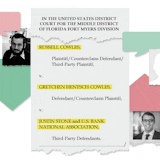In 2011, I wrote on this opinion page, "If you've been in downtown St. Paul in the last several weeks, you will have seen — in the shadow of our Capitol, the Cathedral, and the commercial and entertainment center — people camping near the Dorothy Day Center." The Dorothy Day Center was "stretched" to its limits.
Nearly 10 years later, the former Dorothy Day Center has been replaced by the new Dorothy Day Place, which provides shelter, permanent homes and critical support for 1,000 people a day — three times the volume and multiple times the dignity of the former Center. Dorothy Day Place was an "all-in" community effort which is saving and improving lives every day.
I so much want to say "job over; let's move on" — but I can't. The new Dorothy Day Place, although a dramatic improvement, is stretched beyond its limits and so is Catholic Charities. The growing economy is simply not working for everyone — wages are not keeping up with rents and there is a dramatic shortage of housing, especially for those most in need whom Catholic Charities serves.
Homelessness is at record levels. Throughout Minnesota, increasing numbers of people have nowhere safe and warm to be at night. In the metro area the unsheltered population nearly tripled from 2015 to 2019. Disturbingly, there are dramatic racial disparities among the unsheltered; African-Americans are six times more likely and American Indians nearly 30 times more likely to be unsheltered than the general population.
The Higher Ground St. Paul Shelter was planned to accommodate 280 with the hope never to do so. We blew by that quickly and with two more expansions, shelter capacity is now 356, sometimes more on the coldest of nights.
It could be tempting to throw up our hands or bury our heads in the sand. But if we do, we will pass the tipping point where the challenge will become nearly intractable like Los Angeles, San Francisco and Seattle, where overcrowded encampments are the norm, parking lots are filled at night with families in cars, boulders are placed in doorways to prevent squatters, and sidewalks are bleached in the mornings to limit the spread of infectious diseases.
We can and must do better. And, thankfully, we know how to do better in Minnesota.
This winter a public/private partnership was formed between Gov. Tim Walz, businesses and philanthropic leaders to provide a surge of temporary resources for more shelter. The Minnesota Homeless Fund is saving lives. We must continue this momentum to sustain, increase, preserve and improve our existing emergency shelters, too many of which are overcrowded and understaffed.


